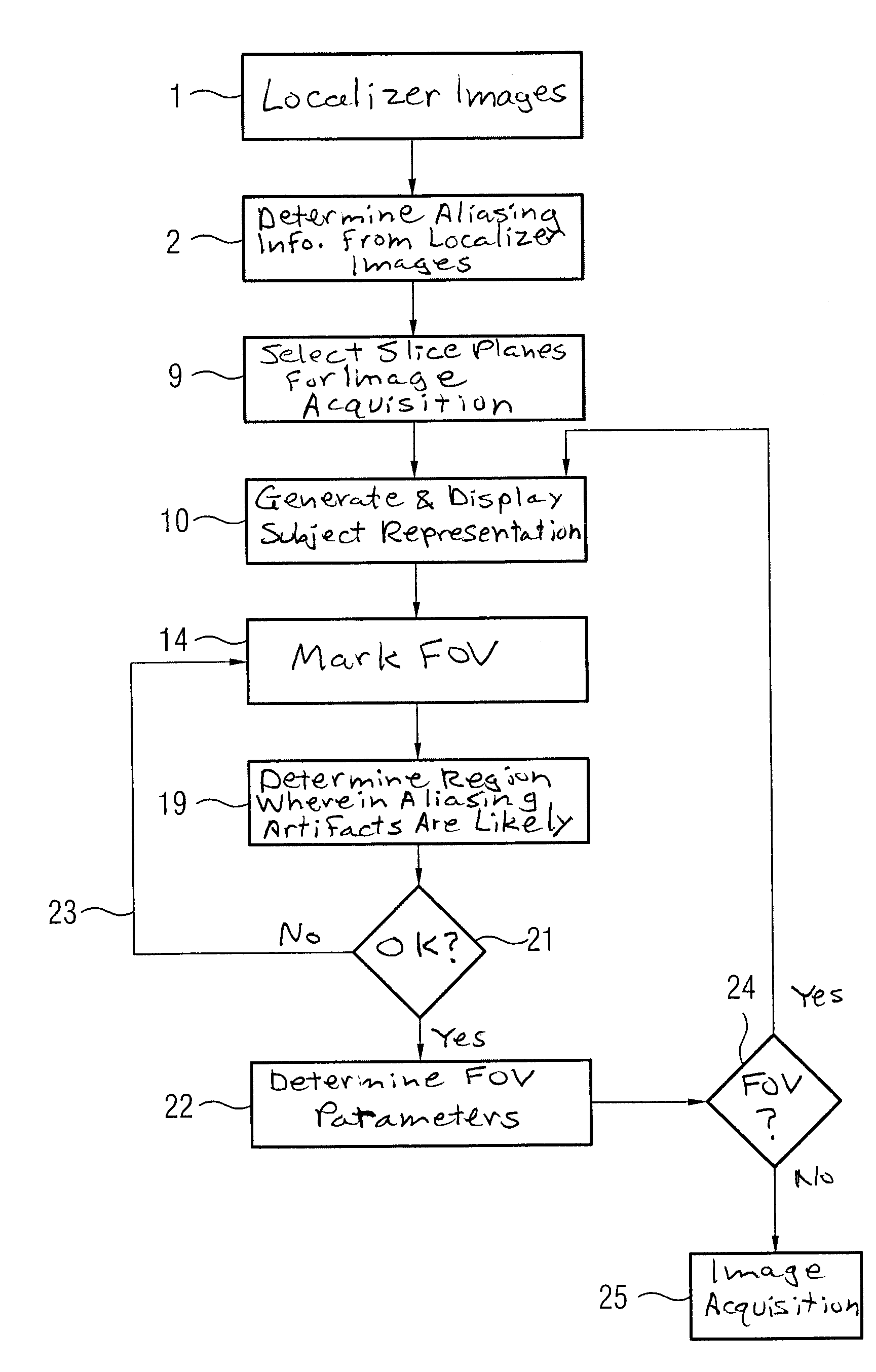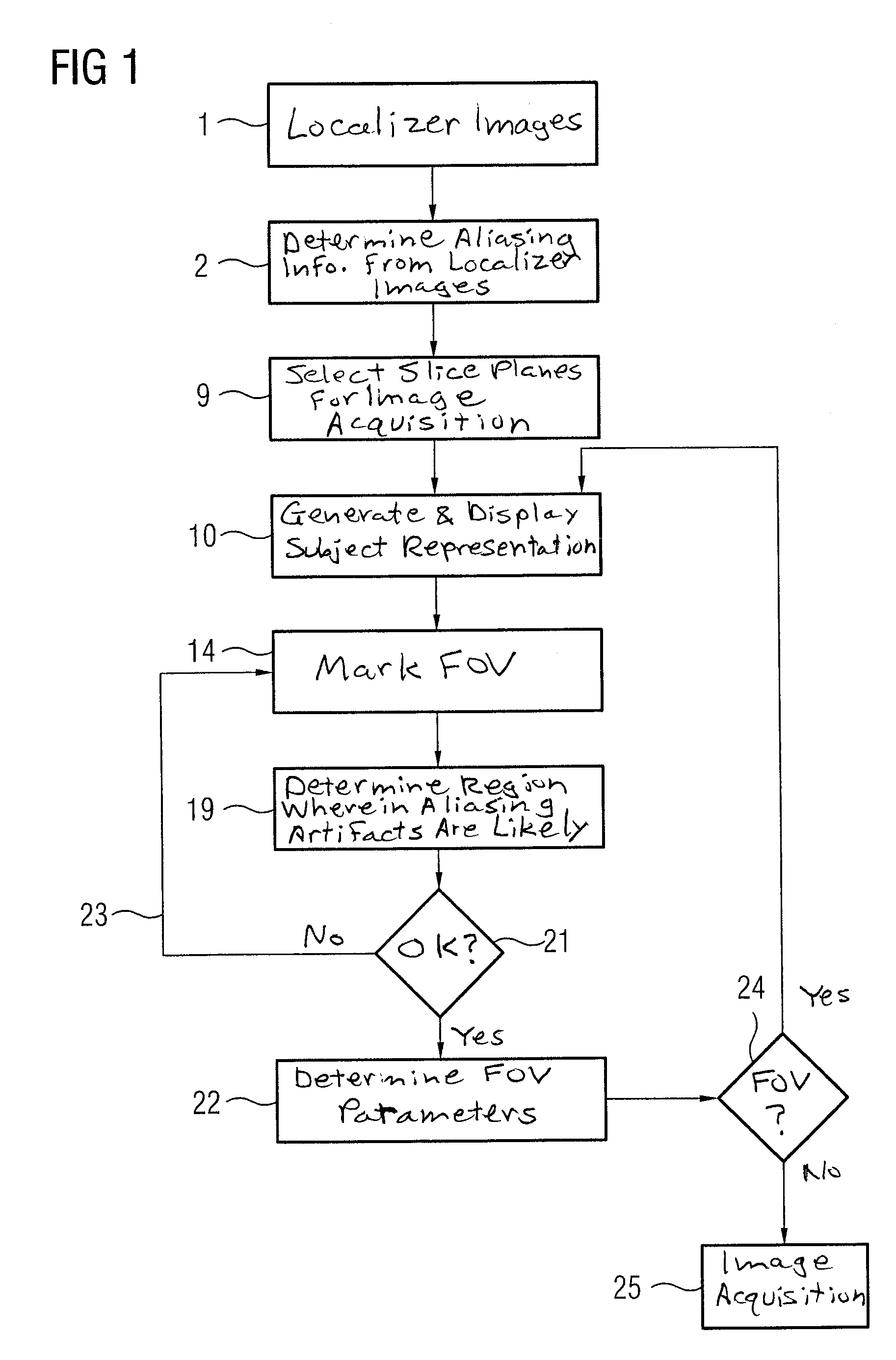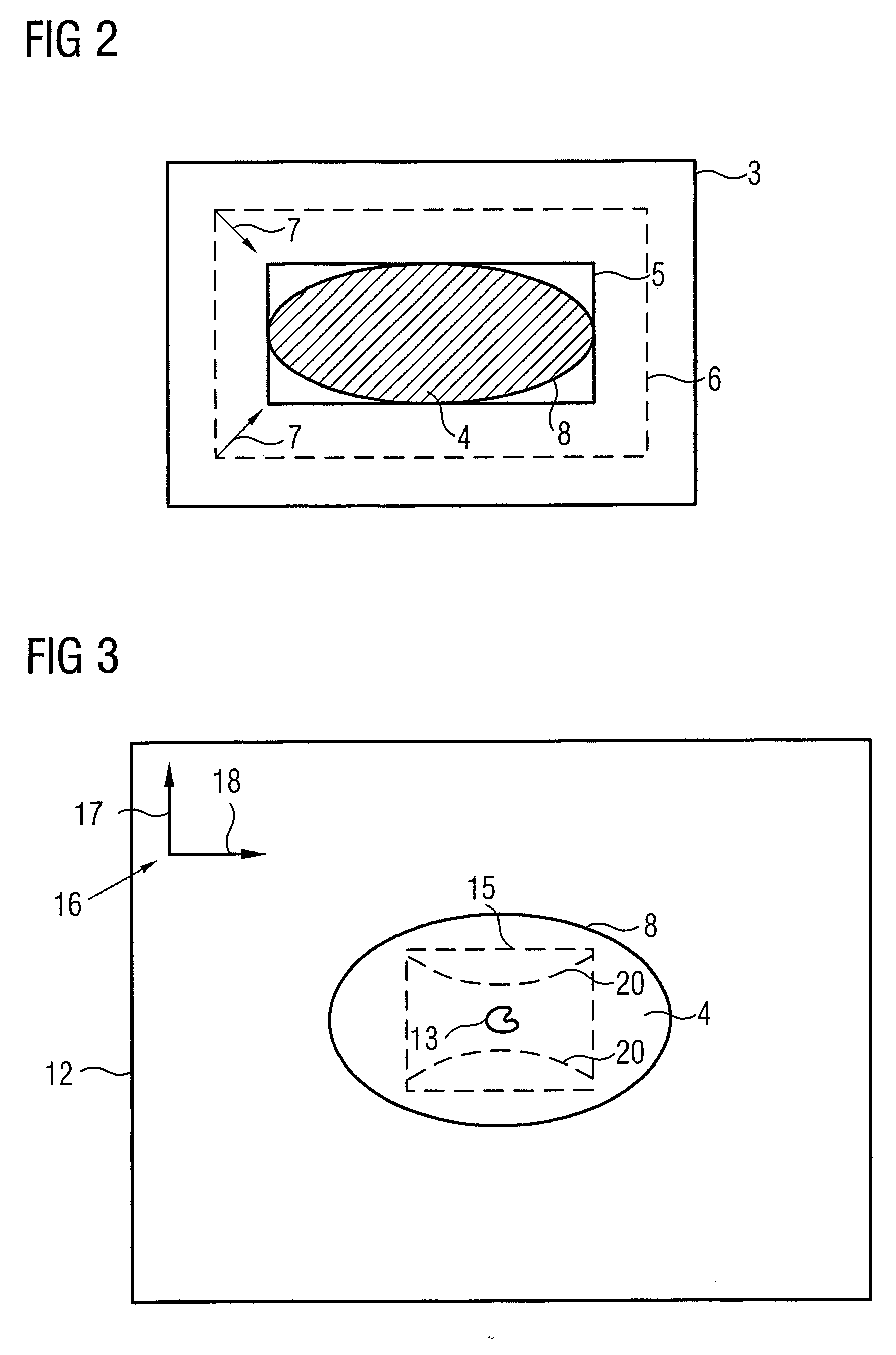Method for image data acquisition with a magnetic resonance device
a magnetic resonance device and image data technology, applied in the direction of magnetic measurements, measurement devices, instruments, etc., can solve the problems of difficult to repeat the acquisition, the number of artifacts known that can occur, and the difficulty of obtaining images
- Summary
- Abstract
- Description
- Claims
- Application Information
AI Technical Summary
Benefits of technology
Problems solved by technology
Method used
Image
Examples
Embodiment Construction
[0033]FIG. 1 shows a flowchart of a first embodiment of the method according to the invention. In a first step 1, a set of localizer exposures of a subject, which should later be the subject matter of an image acquisition with a magnetic resonance device, is initially generated, wherein in particular a region of interest should be acquired. Localizer exposures are already well known and do not need to be explained in detail herein.
[0034]In step 2 of the method according to the invention, aliasing information is determined from the localizer exposures. This information essentially reflects which dimensions the subject has and, correspondingly, how and where aliasing is to be expected. The aliasing information is thus subject-specific and is stored in the magnetic resonance device for the duration of the examination after its determination. In principle, two variants for the determination of said information are conceivable in the framework of the method according to the invention.
[00...
PUM
 Login to View More
Login to View More Abstract
Description
Claims
Application Information
 Login to View More
Login to View More - R&D
- Intellectual Property
- Life Sciences
- Materials
- Tech Scout
- Unparalleled Data Quality
- Higher Quality Content
- 60% Fewer Hallucinations
Browse by: Latest US Patents, China's latest patents, Technical Efficacy Thesaurus, Application Domain, Technology Topic, Popular Technical Reports.
© 2025 PatSnap. All rights reserved.Legal|Privacy policy|Modern Slavery Act Transparency Statement|Sitemap|About US| Contact US: help@patsnap.com



